QuestionHI, I'VE HAD MY 44 GAL. TANK FOR ABOUT 2 MO. NOW. I STARTED OFF W/SIX PLATYS TO GET STARTED AND THEY DID WELL FOR ABOUT A MO. THEN I ADDED WATER (I'VE LEARNED SINCE TO LET IT SIT OUT A DAY OR SO BEFORE ADDING). I HAVE 2 LEFT. I'VE DONE ABOUT 25%WATER CHANGE AND VACUMED IT OUT. AFTER THAT MY WATER LEVELS GOT ALL MESSED UP. FINALLY WITH TESTING MY WATER IT LOOKS GOOD EXCEPT THE PH IS STILL IN THE 8-8.5 ZONE. I'VE ADDED CHEMICALS THAT ARE SUPPOSED TO HELP THIS BUT AM HAVING TROUBLE GETTING IT DOWN. ALSO THE WATER IS CLOUDY. I DID ANOTHER TREATMENT TODAY AND IT LOOKS A LITTLE BETTER BUT NOT AS CLEAR AS I WOULD LIKE IT. LAST WEEK I ADDED 2 CORYDORAS AND 2 DAYS AGO I ADDED 2 GOURAMIS AND 2 PLATYS. (I NOW HAVE A TOTAL OF 8 FISH AND 1 SNAIL) THE BIG QUESTION IS HOW TO CLEAR THE WATER AND KEEP IT THAT WAY. I'M ALSO A BIT CONFUSED ABOUT THE CYCLE OF THE TANK (I HAVE THAT CHEMICAL ALSO) THANKS IN ADVANCE FOR YOUR HELP, STACIE NACHMAN
AnswerHi Stacie;
The best thing you can do is get rid of all those chemicals and let the tank adjust naturally. The pH adjuster is trying to bind with the minerals and that is what is causing the cloudiness. The pH will drop on its own as the system ages. The fish are already used to the pH as it is now anyway. Trying to adjust the pH causes more stress to the fish than just leaving it alone. It is fluctuating too much for them.
Since it has been running with fish in it for about 8 weeks, I would say the initial cycling is probably complete. Check for ammonia and nitrite. If they are at 'zero' it is fully cycled. Here is my article on it for you to learn more about this crazy process;
**********
New Tank Syndrome or Break-in Period
So you have a new tank and you filled it up, put the filter together, mounted the heater into place and turned on the lights. You have all the plants and decorations where you want them....
You are ready for fish.
But, your filter is not ready for a full tank of fish yet.
The filter is running and moving the water and cleaning out crud, right? Of course!
But a very important part of your filter is the part you can't see. An aquarium filter removes the larger visible stuff, but it also must remove the dissolved fish waste that turns into ammonia in the water. To do this, special bacteria must grow in the filter system and on the particles of gravel in the bottom of your tank. This process occurs even on a limited scale in little fish bowls that have no filter in them.
This is "New-Tank Syndrome" or the "Break-in Period". The entire process takes 6 to 8 weeks to complete because these "nitrifying" bacteria grow quite slowly.
Start off with only two hardy fish for every ten gallons of water and don't add more until the 6 to 8 weeks has gone by. Hard to be patient, but it is worth it to keep your fish alive and healthy. As a matter of fact, the bacteria cannot develop without fish in the tank. You can let that tank sit forever without fish in it, but as soon as the first fish goes in the process begins. Avoid changing the filter pads during break-in. This removes the bacterial colonies that are essential to a balanced aquarium. You can rinse the filter pad out in a container of aquarium water. This will preserve most of the bacteria colonies while still allowing your filter to flow freely. Even using bacteria additives and water conditioners when you first set up the tank will not make a tank cycle by itself. If there are no fish to provide food (fish waste) for the bacteria, the beneficial bacteria cultures will die and you will have to start the colonies all over again once fish are added to the tank.
Feed your new fish VERY lightly. Any excess food will cause additional waste your system cannot afford to have right now. If you see food floating around or lying on the plants and gravel after five minutes, too much food is going into the tank. Cut back a little each time you feed until it is ALL gone 5 minutes after you feed them.
During this "break-in period" your tank will become cloudy and milky looking. You may have to tolerate this for the entire break-in period but it is only temporary. Changing 25% of the water three times a week until the break-in period is over helps a great deal. Changing water reduces the ammonia and nitrites that rise while the bacteria continues to multiply. If ammonia and/or nitrites become too high, your fish will become stressed and possibly die. Use a good water conditioner when you replace the water and make sure it is the right temperature to avoid shocking your fish.
When the break-in is over after 6 to 8 weeks and there are no nitrites or ammonia present in the water you can slowly add more fish. Add one or two every week until you reach the desired population. This allows the bacteria to adjust to the new population every time before adding more. Monitor the nitrites and ammonia to be sure they don't come up. If they do, make a 25% water change and check them again. Don't add the next fish until the levels are down again.
The safe maximum population for any size tank is one inch of adult fish for every gallon of water in the tank. Do some research to be sure of the fish you are interested in. Even though they are small when you buy them, you have to base your population calculations on full-sized adult fish. Many hobbyists have up to two inches per gallon but this can be risky. If a water quality issue arises or a disease occurs it will spread fast and furious in an over-populated tank. In any case, 25% water changes every week to two weeks are absolutely essential for the health of your fish.
Following these guidelines will help you get your new tank on the right track.
**********
Followups welcome
At Your Service;
Chris Robbins
Come on over and join us on the freshwater fish forum at About.com to get even more information too;
http://freshaquarium.about.com/od/questionsanswers/a/naavigateforum.htm
My member name is ChrisR62. See You There!

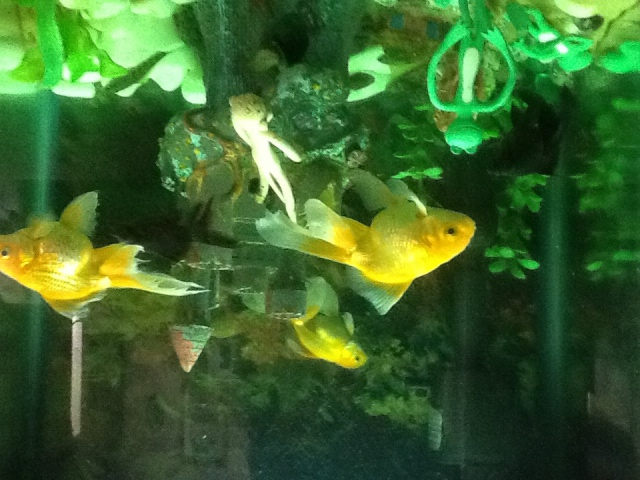 Goldfish bulging stomach
Question
Goldfish w bulging sto Goldfish bulging
Goldfish bulging stomach
Question
Goldfish w bulging sto Goldfish bulging
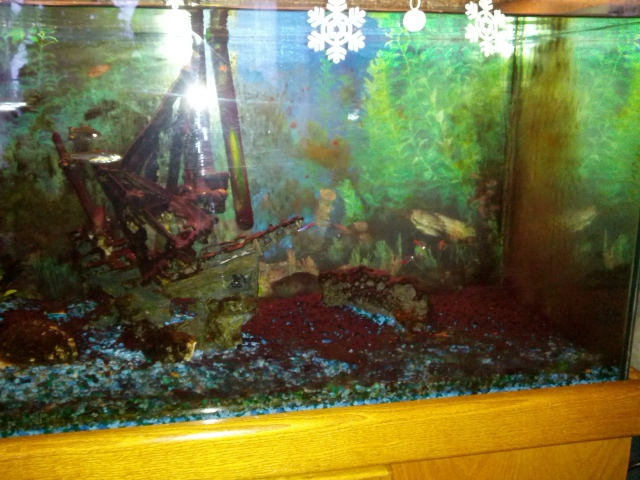 Fish Aquarium mold?
QuestionAquarium
QUESTION: Hi, I have a 75 gallo
Fish Aquarium mold?
QuestionAquarium
QUESTION: Hi, I have a 75 gallo
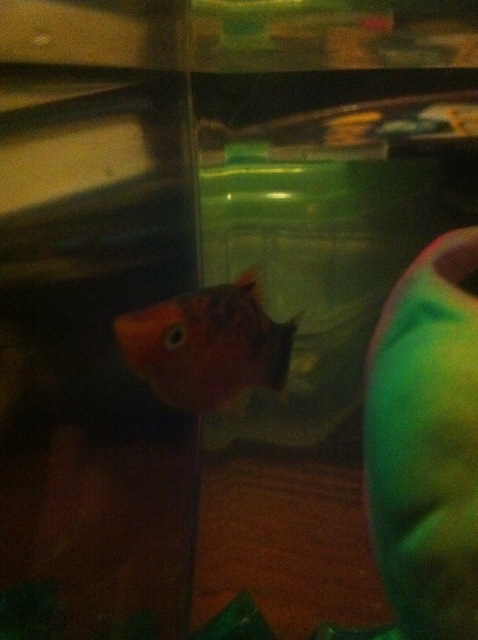 Is my fish depressed or something?
QuestionQUESTION: My fish has been acting strange ever
Is my fish depressed or something?
QuestionQUESTION: My fish has been acting strange ever
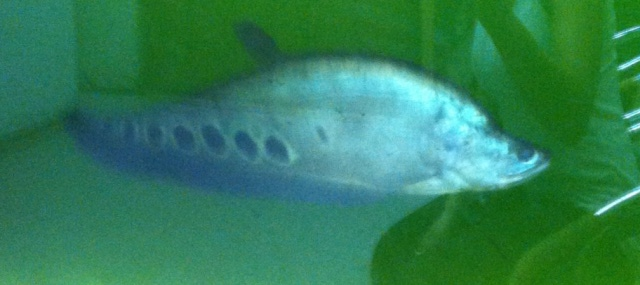 What kind of fish is this??
Question
Fish
I have been trying to figure out w
What kind of fish is this??
Question
Fish
I have been trying to figure out w
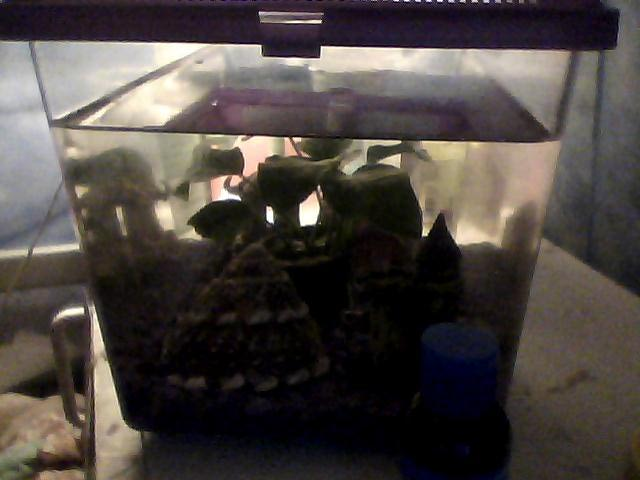 Dying/ Breeding Bettas
Question
Oreo
Ive been trying to breed bettas fo
Dying/ Breeding Bettas
Question
Oreo
Ive been trying to breed bettas fo